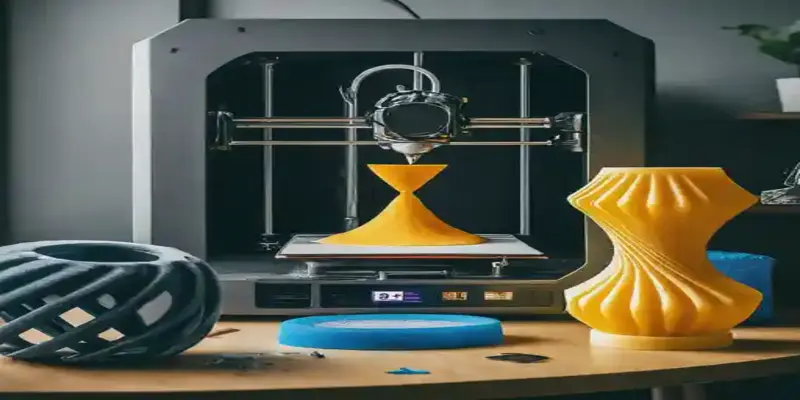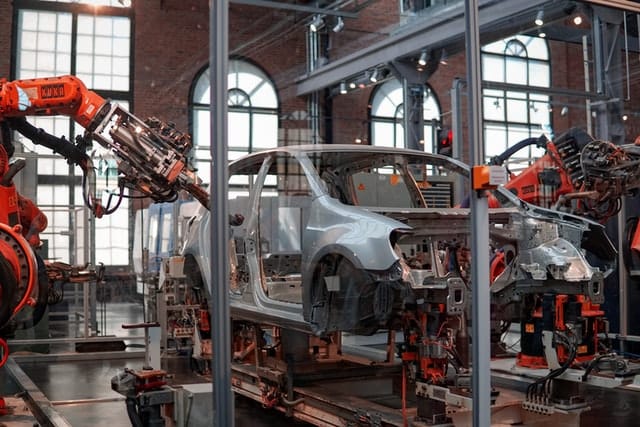AI Might Just Revolutionize Your 3D Printing
AI transforms 3D printing by improving precision, efficiency, and sustainability. From automotive to healthcare, AI enhances manufacturing processes, minimizes errors, and optimizes print parameters. The future of 3D printing looks promising as industries embrace these advancements.

Artificial intelligence has been transforming various industries for some time now, with the world of 3D printing being no exception. When requiring precision such as in vehicle manufacture, medical devices, hardware and other tech equipment, 3D printing has become indispensable for both large enterprises and smaller businesses that want to get ahead and stay there. 3D printing technology is being taken one step further, by integrating it with AI in order to enhance accuracy and efficiency while reducing costs, oversight and hopefully protecting the environment.
Read on to find out more.
3D Printing Can Enhance Precision
Precision in manufacturing has always been important, precision linked with easy management and a repeatable process starts making ears prick up.
One of the key benefits of incorporating AI into 3D printing is the enhancement of precision, this being of particular importance when companies produce thousands of identical products every week and an error could result in huge costs. A company like Mercedes Benz, would be a good example, as it requires hundreds of thousands of identical parts, and an error could lead not only to additional costs but also to safety issues, a need for re-work and a delay in stages further down the production line.
Traditional 3D printing methods can suffer from inaccuracies that lead to flaws in the final product, resulting in high material losses as well as time spent manufacturing. The aim of AI in 3D printing, is to detect these errors and correct them in real-time, leading to higher quality outputs and stopping a flaw running through the entire product line. Machine learning algorithms can analyze data during the printing process to identify anomalies and make necessary adjustments, changes that a human eye could not pick up or react to as quickly.
It is possible for businesses to find companies such as SLS printing and others online, these companies exemplify how AI can monitor and optimize the printing process, reducing waste and improving efficiency. By continuously learning from each print cycle, AI systems become more adept at identifying potential issues before they manifest into significant problems. The integration of AI in 3D printing also enables predictive maintenance capabilities, whereby systems use data analysis to identify operational anomalies and potential equipment defects, enabling timely repairs before failures occur. The aim of this, is to minimize the frequency of maintenance, avoiding unplanned outages and unnecessary preventive maintenance costs.
An added way that AI enhances precision in 3D printing is through the optimization of print parameters. Think of factors like layer thickness, print speed and temperature, which can significantly impact the quality of your final products. AI algorithms can analyze data from previous print jobs and make real-time adjustments to these parameters, ensuring optimal results, which not only improves the accuracy of the printed objects, but also reduces the likelihood of defects and failures.
Automation And Efficiency
While a certain amount of skepticism of AI is understandable and natural, there are huge benefits if used and implemented correctly. Automation, whether AI assisted or not, speeds up production and minimizes the possibility of human error, cutting down on the mistakes that employees might have made.
In industries where products need to be developed quickly, such as aerospace and healthcare, this can be particularly beneficial. Additionally, real-time monitoring and feedback loops enabled by AI, allow owners and managers to make immediate adjustments, ensuring that each product comes out exactly as intended. This level of control and oversight leads to a significant reduction in material waste and energy consumption, making the process more sustainable and less harmful to the environment.
AI-driven automation in 3D printing also extends to the post-processing of tasks. After a product is printed, it often requires additional work such as the removal of support structures, sanding or painting. AI can optimize these processes by determining the most efficient tools and techniques based on the geometry and material of the printed object.
To summarize:
What AI systems do particularly well is analyze processes and then give manufacturers much-needed feedback, this ensures that serious errors can be avoided before they become costly.
Industries That Are Embracing AI
AI is being implemented and used in so many industries, from AI tools to help in a job search to analyzing traffic patterns in order to make roads safer and less congested. Another sector benefitting from AI is the healthcare industry, where customized prosthetics and precision implants are now being produced with incredible accuracy. This is of vital importance for products that need to function optimally to sustain life or allow a patient to regain freedom of movement.
In the automotive sector, complex parts that require exact specifications are manufactured more efficiently, allowing managers and employees to focus on other areas within the manufacturing process.
Within aerospace, a sector where safety and precision are crucial, AI-driven 3D printing ensures that each component meets stringent quality standards and dimensions. This technology also opens up new possibilities for rapid prototyping, allowing companies to innovate faster than ever before. The implications for product development cycles are profound, as businesses can bring new products to market quicker while maintaining safety standards and adhering to exact specifications.
The education sector is also embracing AI-powered tools and measures to enhance learning experiences. With parts of the world of learning moving online, students can now design and print their own 3D models and creations, allowing for a new found creativity and interaction with freshly printed objects. The biggest advantage for the education sector is that this allows students to focus on the creative aspects of their projects rather than worrying about technical issues.
To Sum It All Up
The future looks both bright and promising for AI in 3D printing, as ongoing research continues to push the boundaries of what is possible. Collaborative efforts between academia and industry are driving innovation and proving to be a good fit for faster, more cost effective ways of AI in 3D printing. With universities conducting the research, and companies able to take these findings and adopt them in the production lines, allowing for real world testing.
